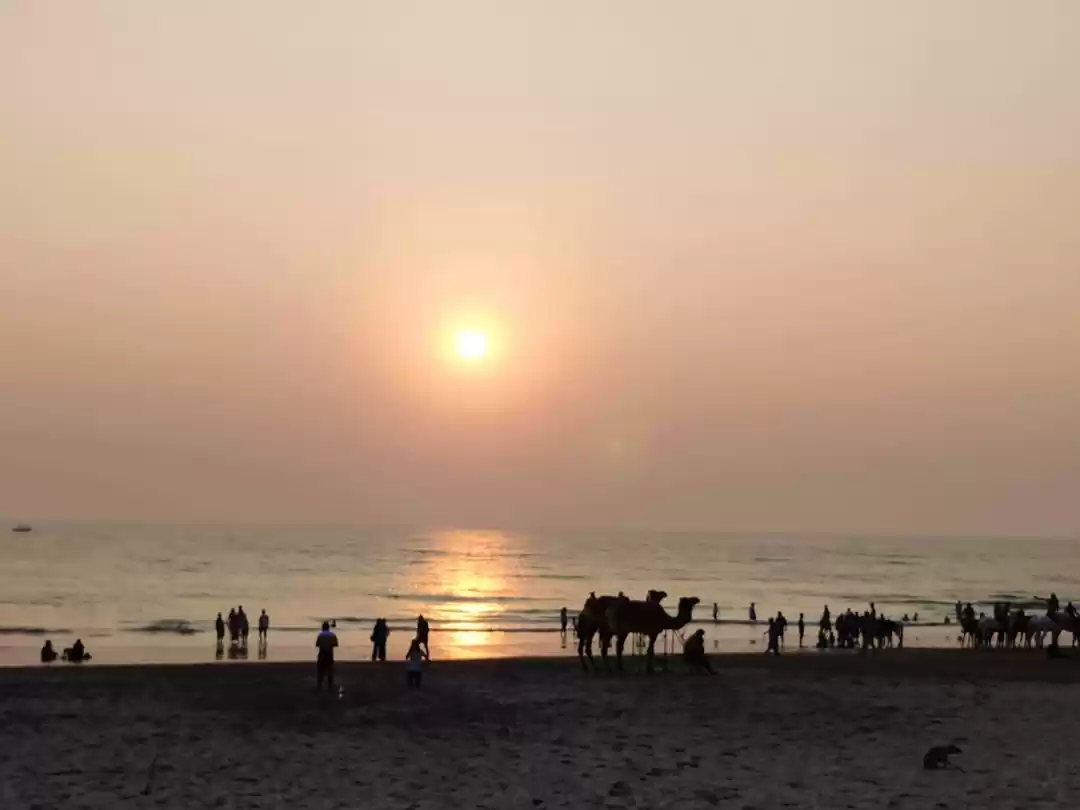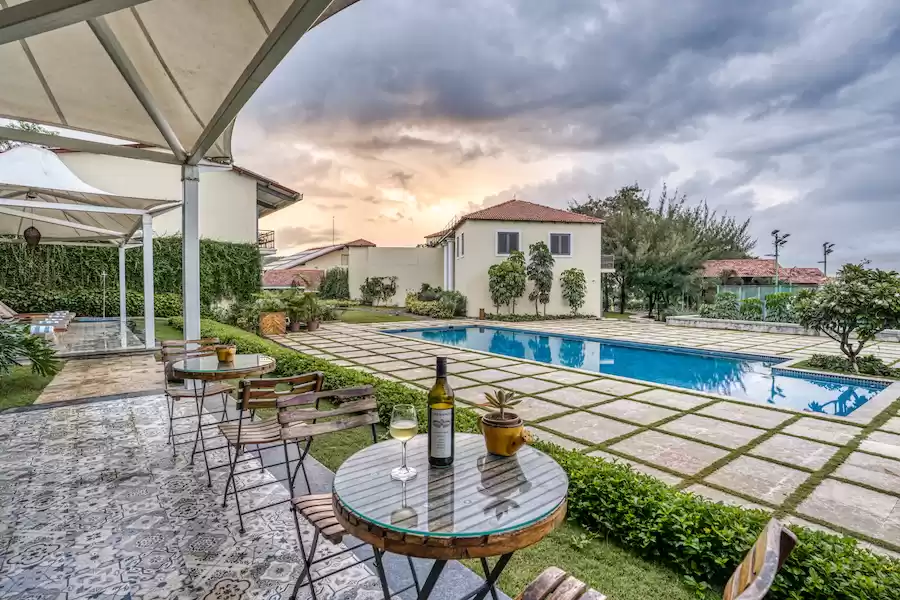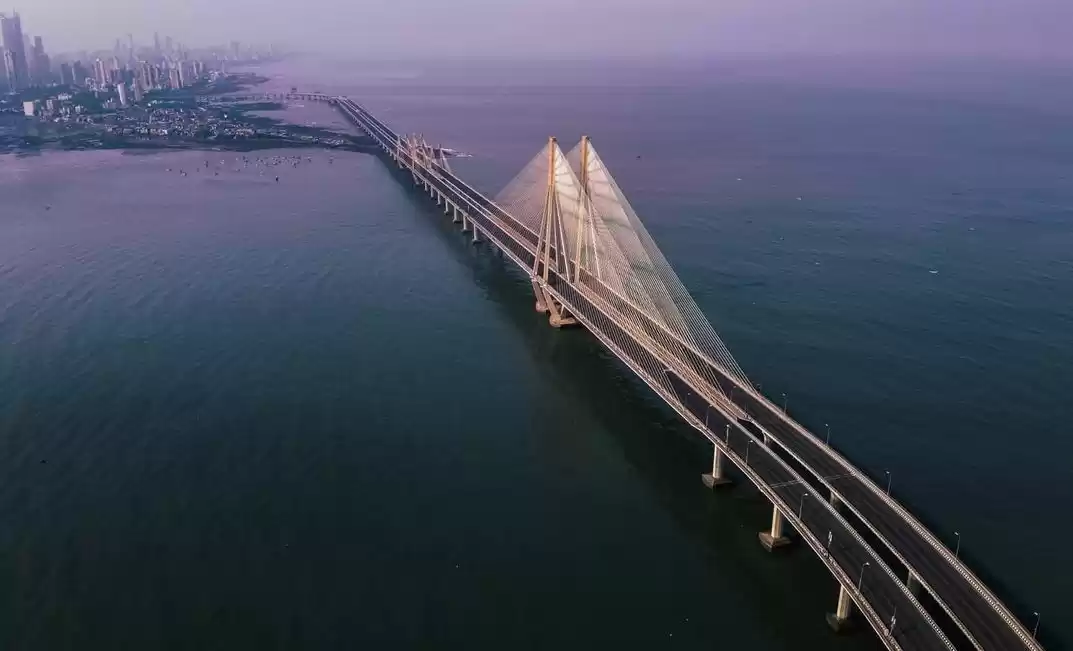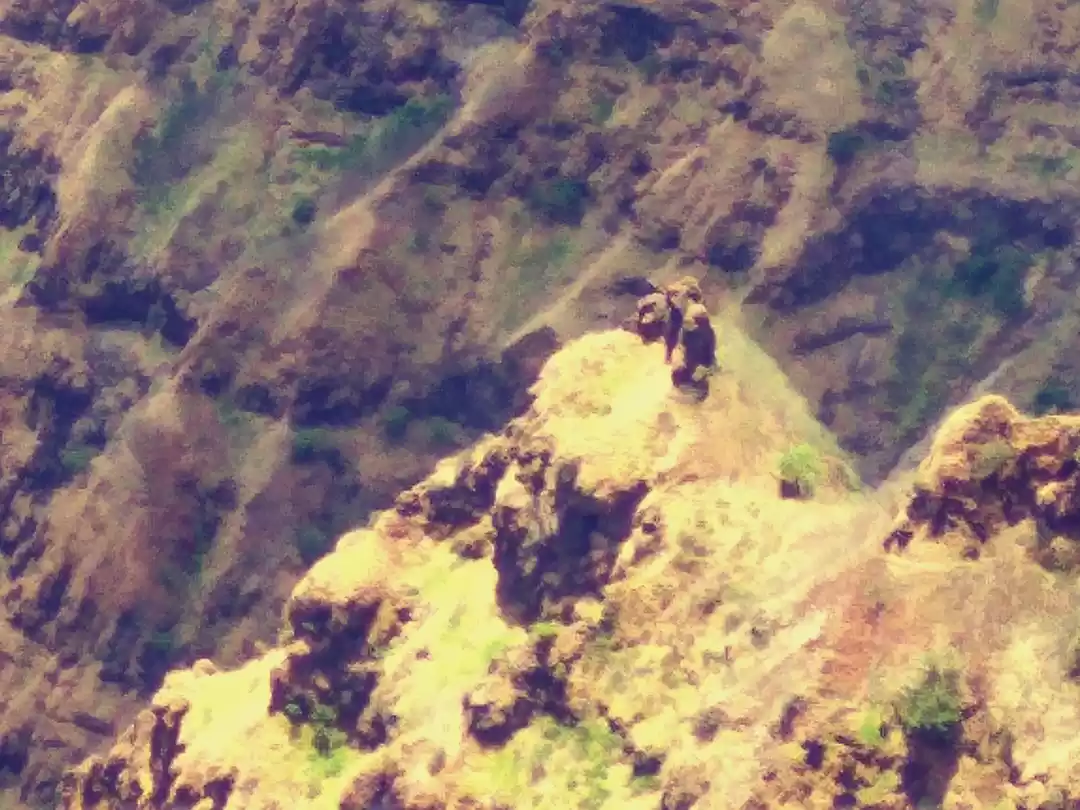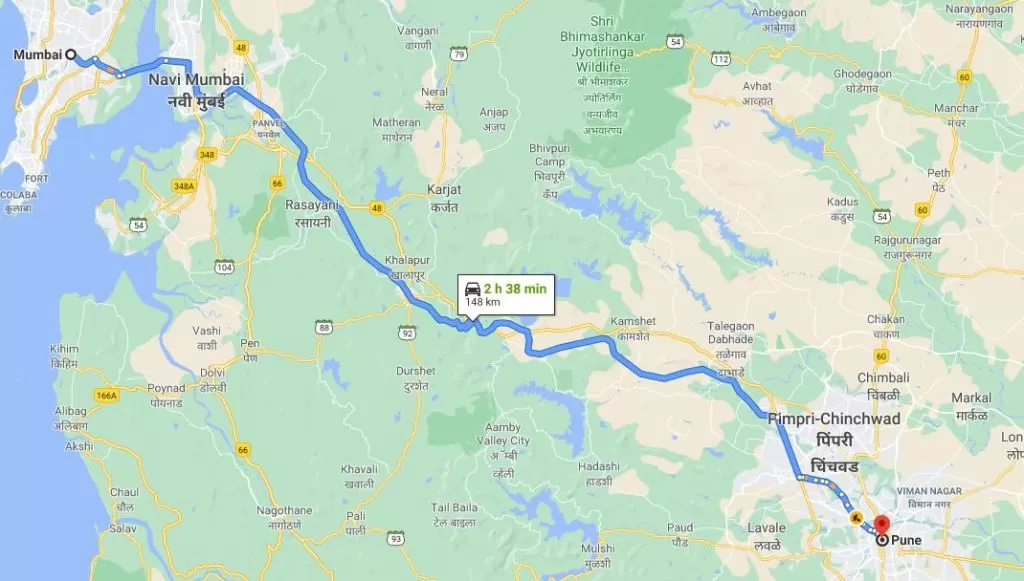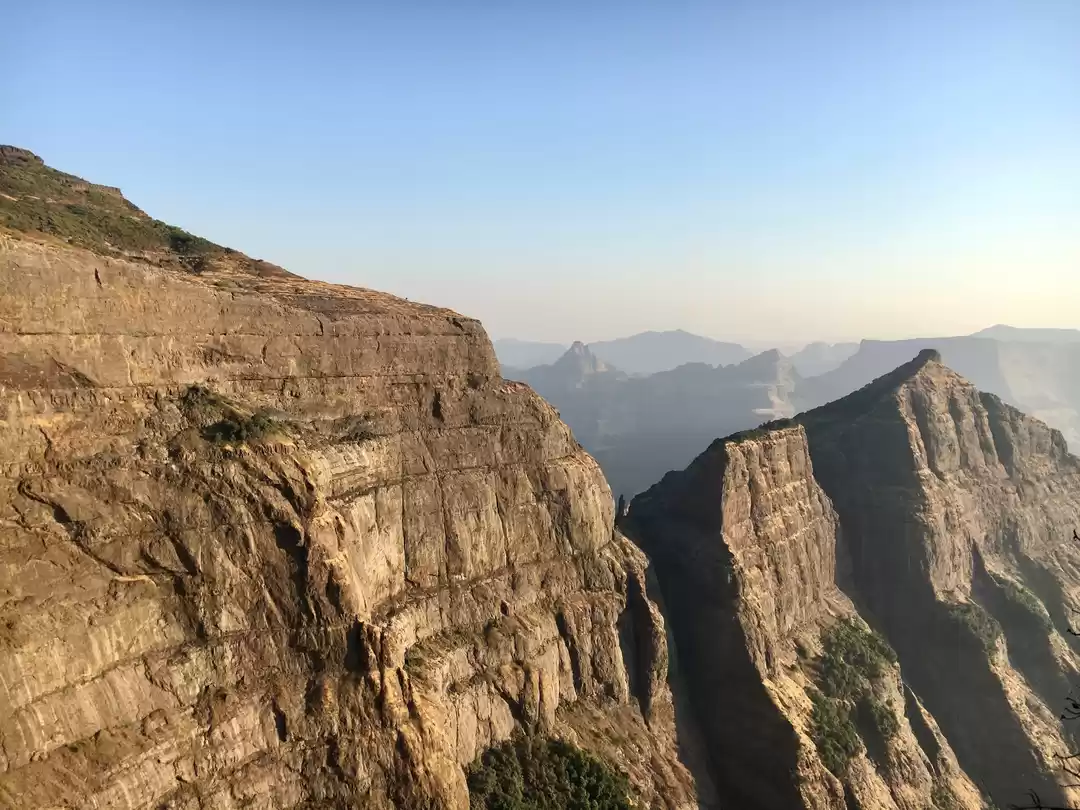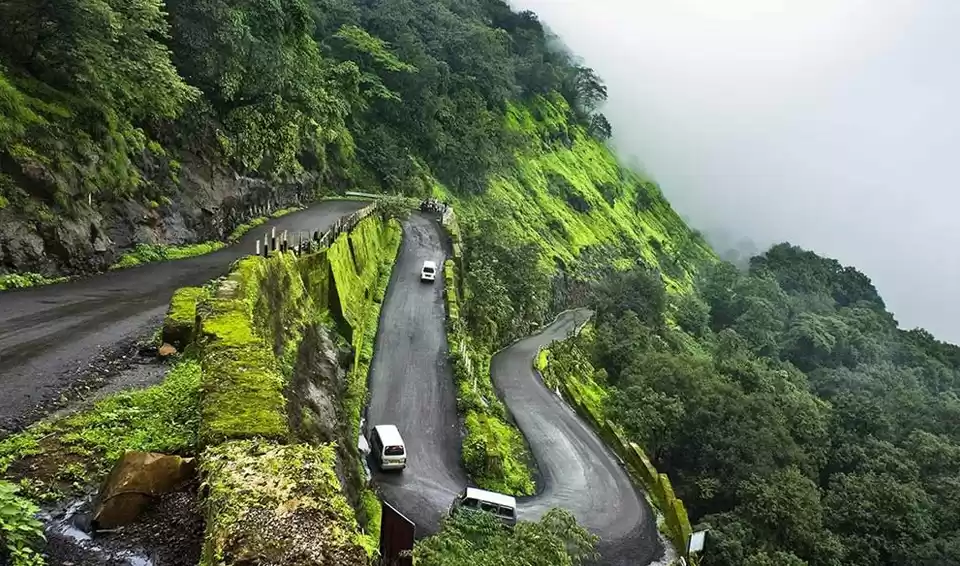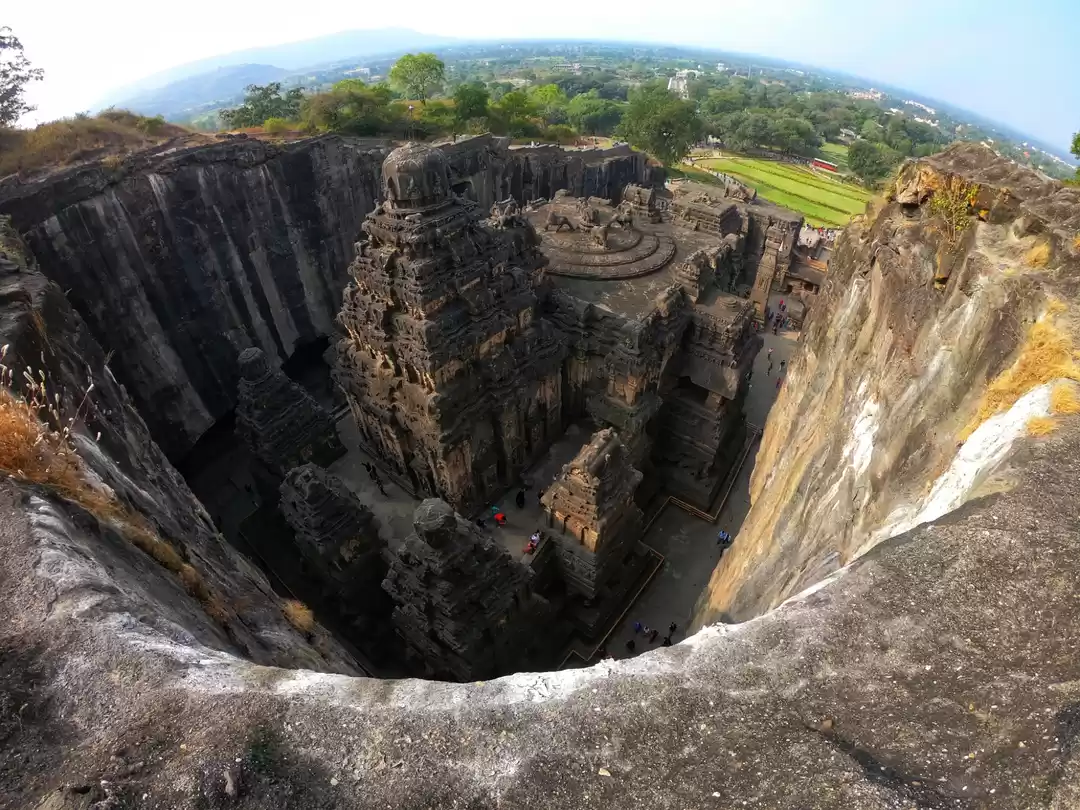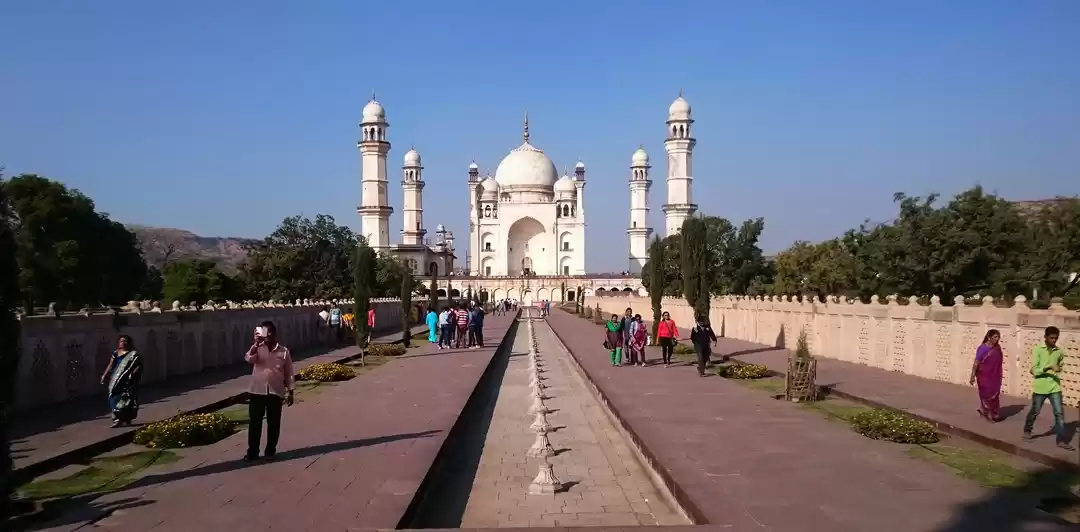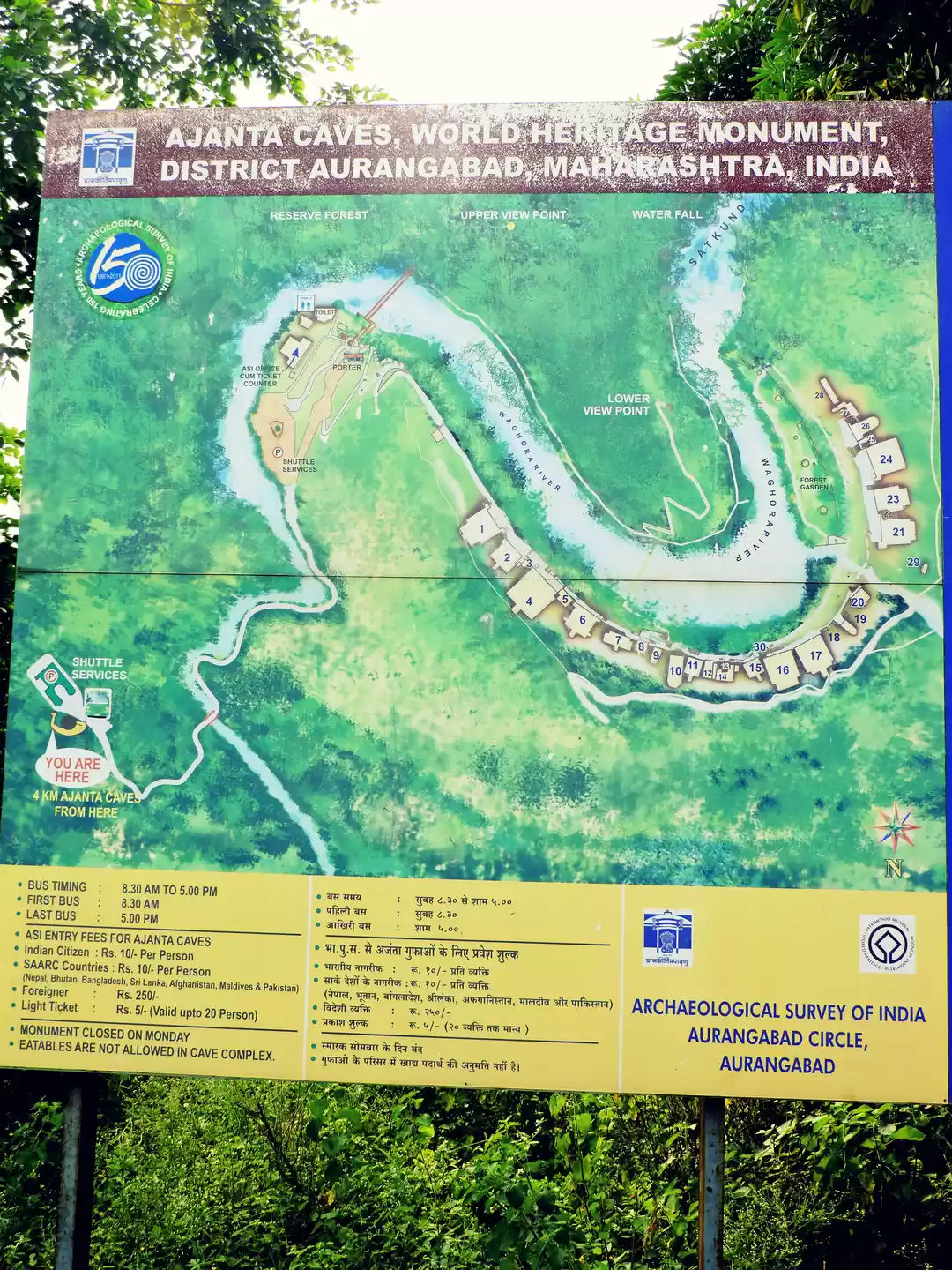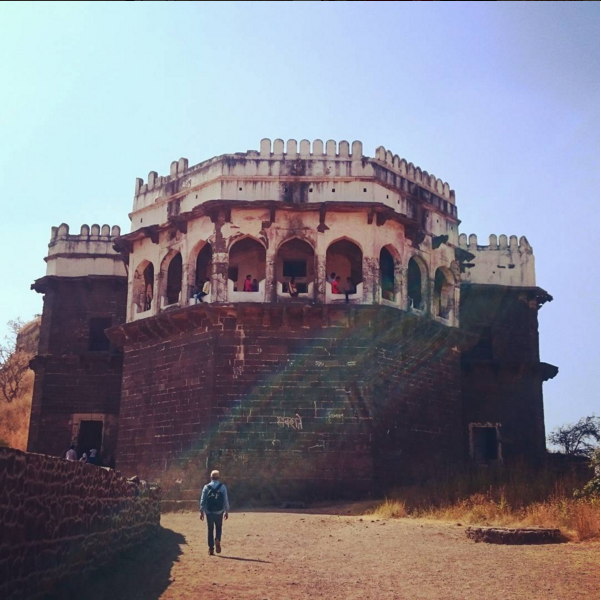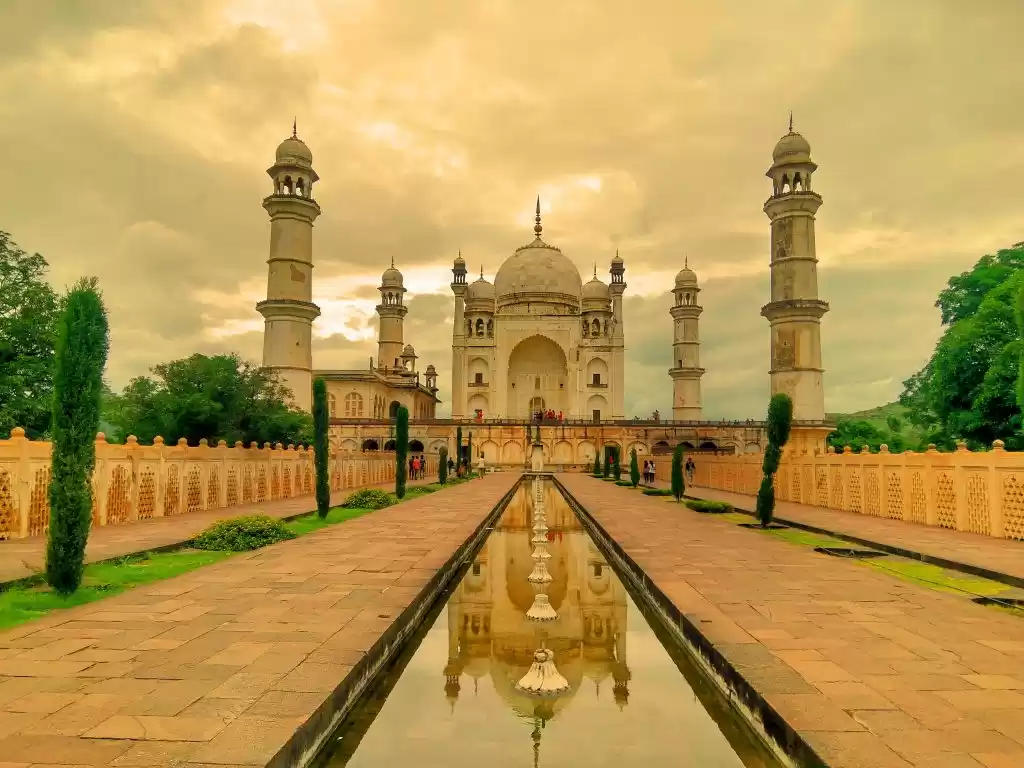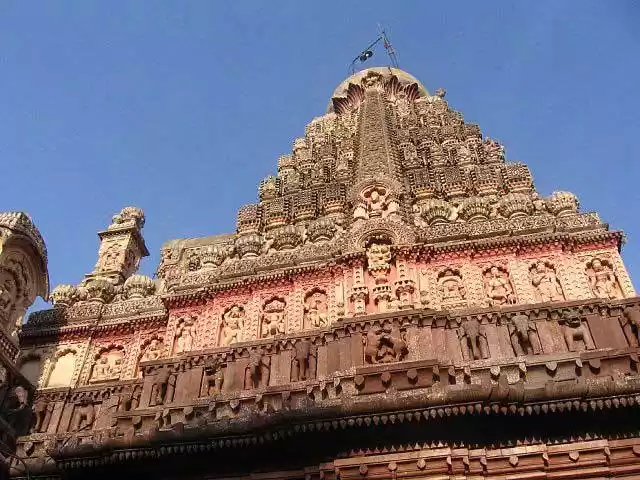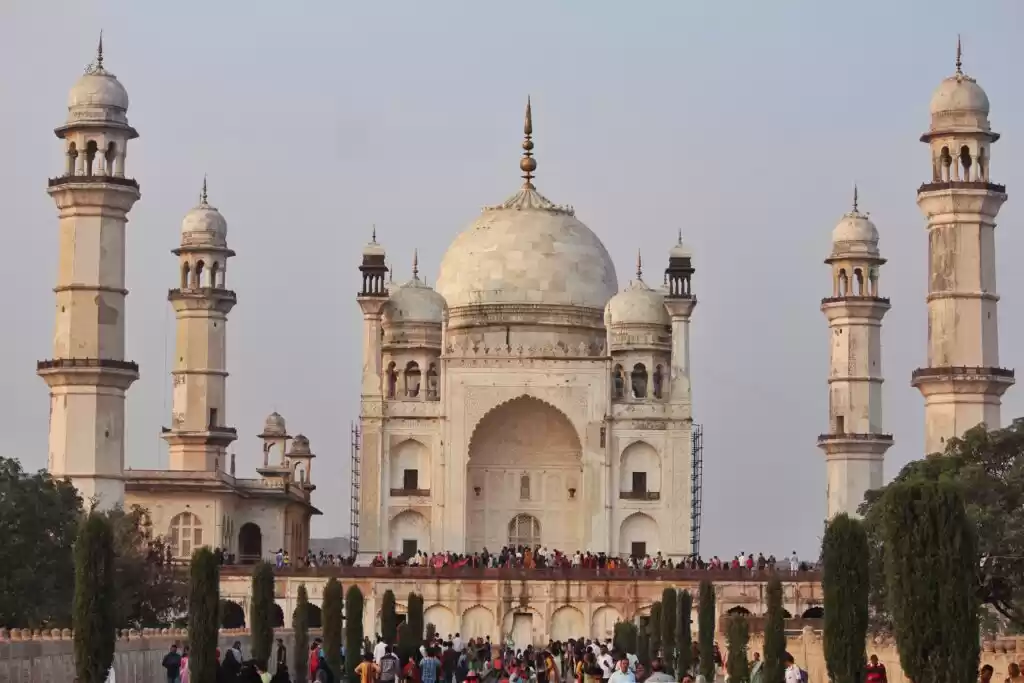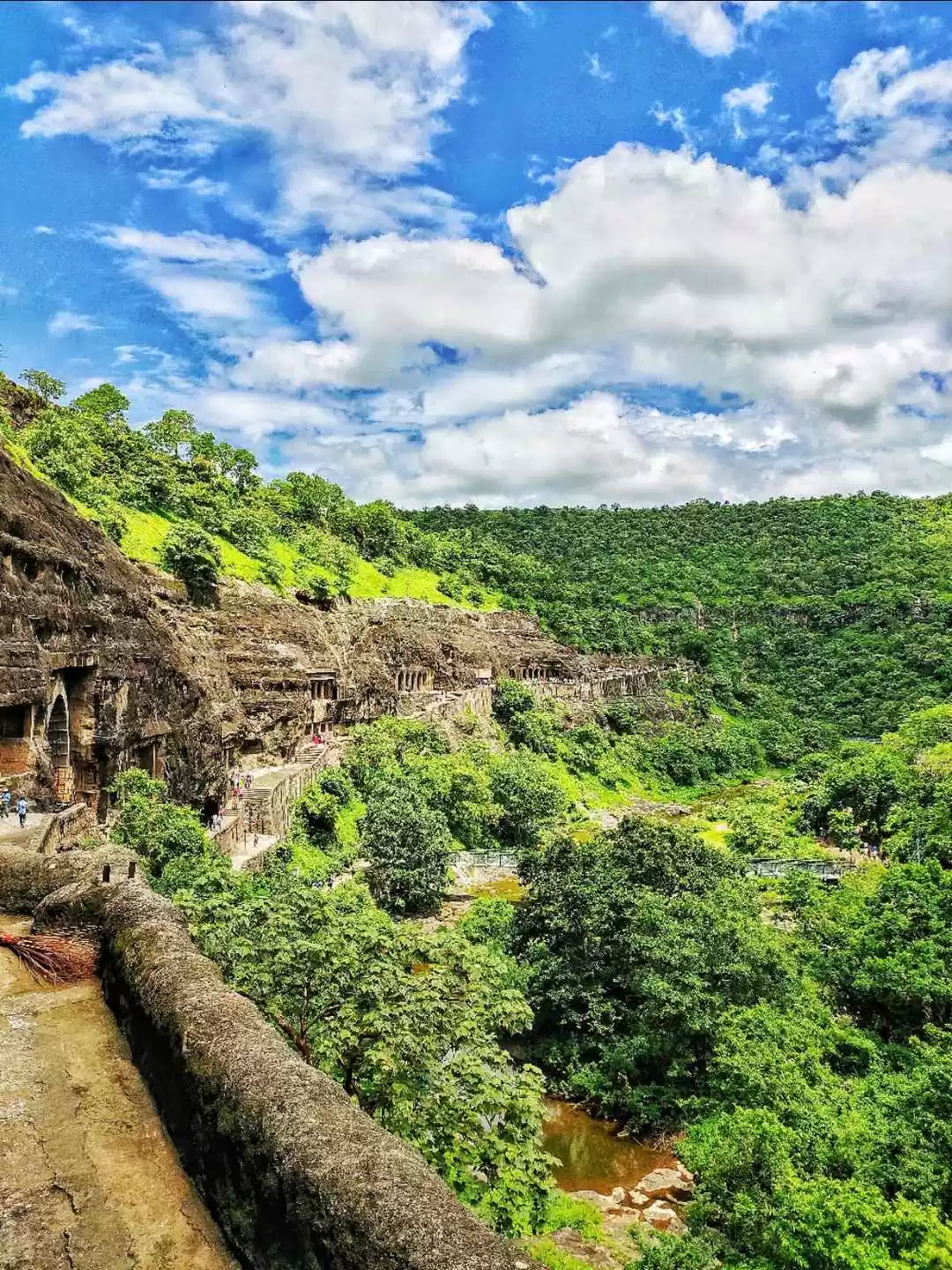
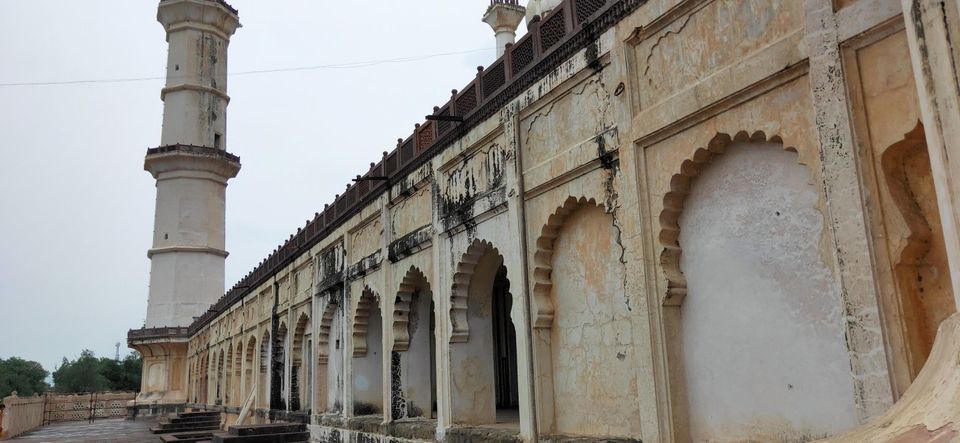
We were traveling in Aurangabad in the Indian state of Maharashtra for five days, and after completing a famed trip to Ajanta Caves and its equally famous cousin Ellora Caves we decided to explore the city and suburbs of Aurangabad. Bibi-Ka-Maqbara was just 10 kilometers from our hotel and we decided to pay a visit. After negotiation through typical Indian city lanes in a crowded neighborhood of Aurangabad city called Begumpur we arrived at the monument. The scene was typical old Indian city streets where men, cattle and two wheelers managed to avoid each other with practiced skill. On arrival at the mausoleum gates, we purchased our entry tickets. The entry tickets are priced at 25 Indian Rupees for Indians and 300 Rupees for foreign nationals. We arrived around 10 O'clock but the entry timing is from 8 AM to 8 PM from Monday to Sunday. The monument is enclosed within a garden divided into four sections confirming to the Mughal architectural pattern. It is surrounded by an enclosure wall with pillared pavilions.
The Arabic word "Maqbar" meant a mausoleum and is derived from another word called 'qabr' which translates into a grave


The Arabic word "Maqbar" meant a mausoleum and is derived from another word called 'qabr' which translates into a grave. The Mughal emperor Aurangazeb had erected the Bibi-Ka-Maqbara in memory of his deceased wife, Dilras Banu Begum. Now the Urdu words 'Bibi" or "Begum" is often confused in India as wife. The term Bibi in Urdu is used for a woman of nobility, while the word Begum is used as a term to refer to a gentle or kind woman. Aurangabad is 200 kms away from the city of Mumbai. The monument has for long been unjustly ridiculed , textually, as a 'Poor Man's Taj Mahal' or 'A mini Taj Mahal' and it is my personal opinion that Taj Mahal in Agra has to an extent overshadowed the glory of this beautiful piece of architecture much like Delhi had overshadowed Daulatabad.
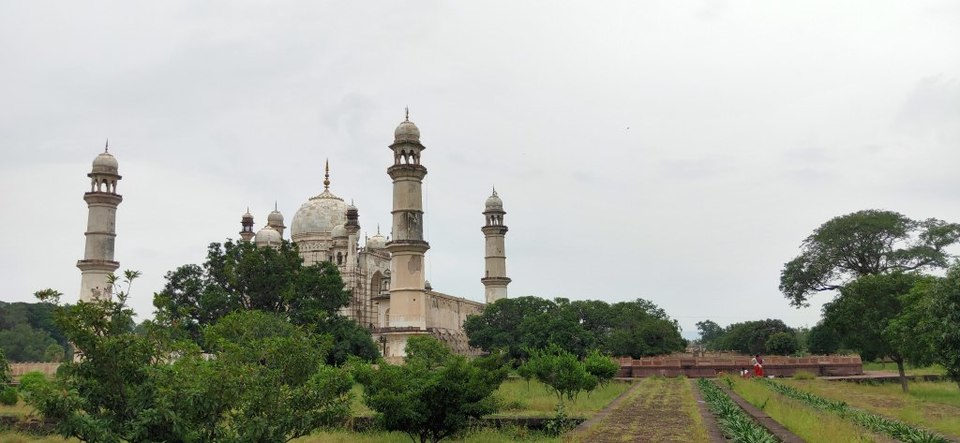
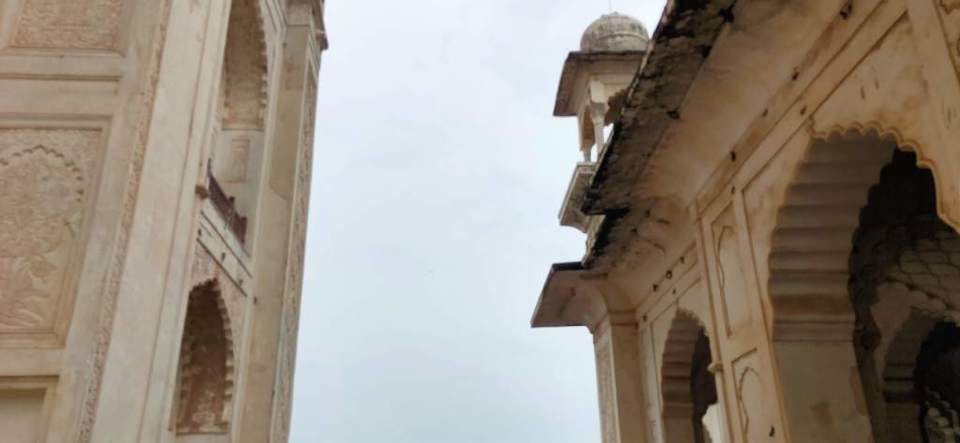
Daulatabad was briefly position as the capital of the Delhi Sultanate and had almost managed to make itself as the administrative capital of India. Perhaps had it been the case, the whole contemporary political structure of India would have been a different story altogether.
The mausoleum was built with marble till the lower part of the wall. Basalt was used beyond this level till it reached the dome. The dome is itself made of marble. The finely polished basalt is decorated with stucco, although now occasional patched of stucco designs are crumbling.
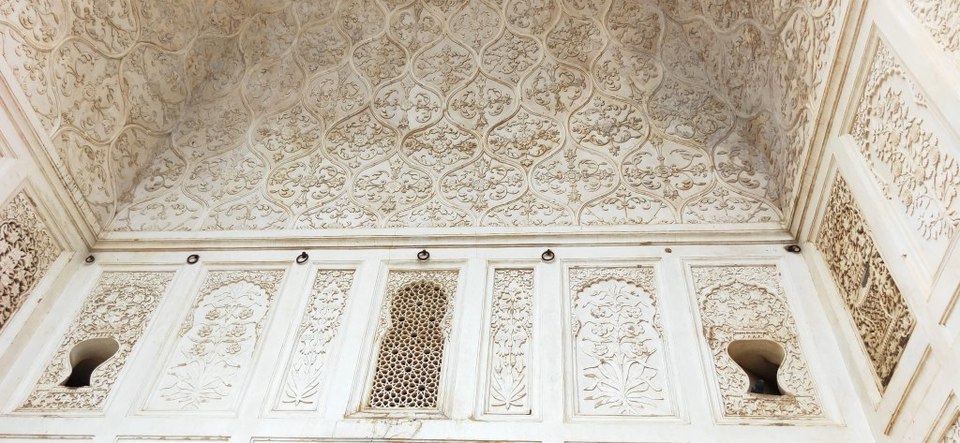
While I may have credited the construction of the monument to Emperor Aurangazeb, historians debate on the ownership. Some have credited Aurangazeb with its creation while others have maintained that his son, Mohammed Azam Shah, as the creator in memory of his mother. I am going to give Emperor Aurangazeb the credit, as in either case, he was the one who financially commissioned it.
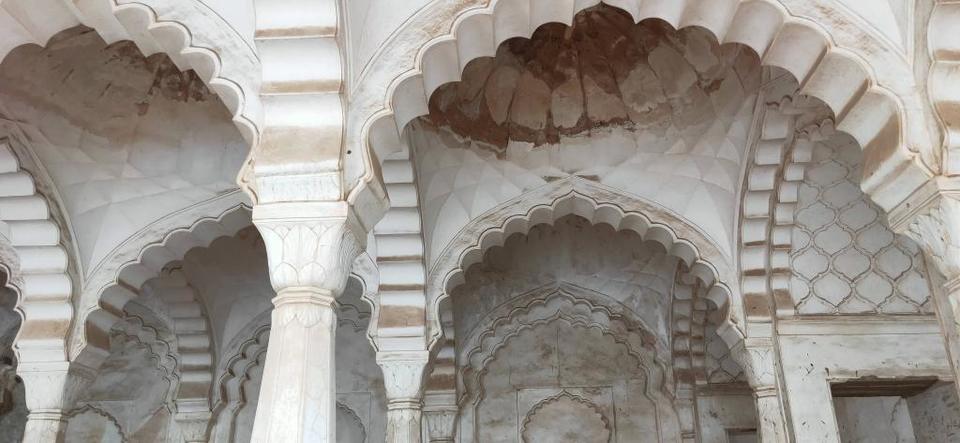
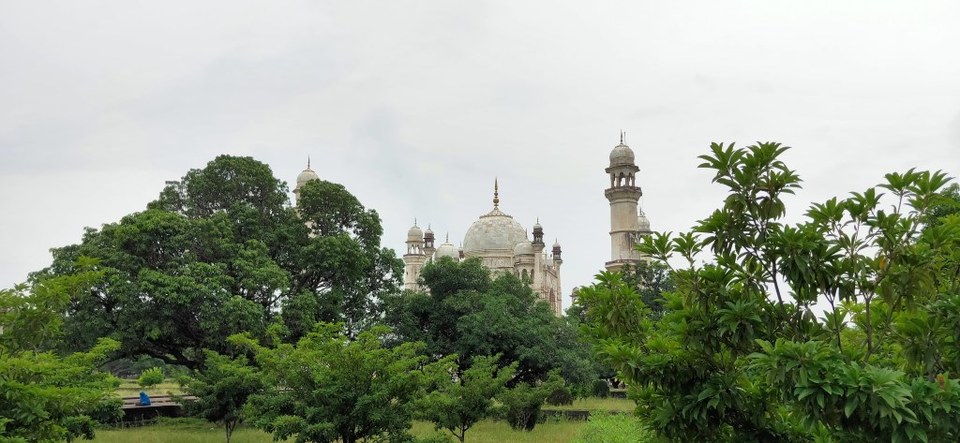
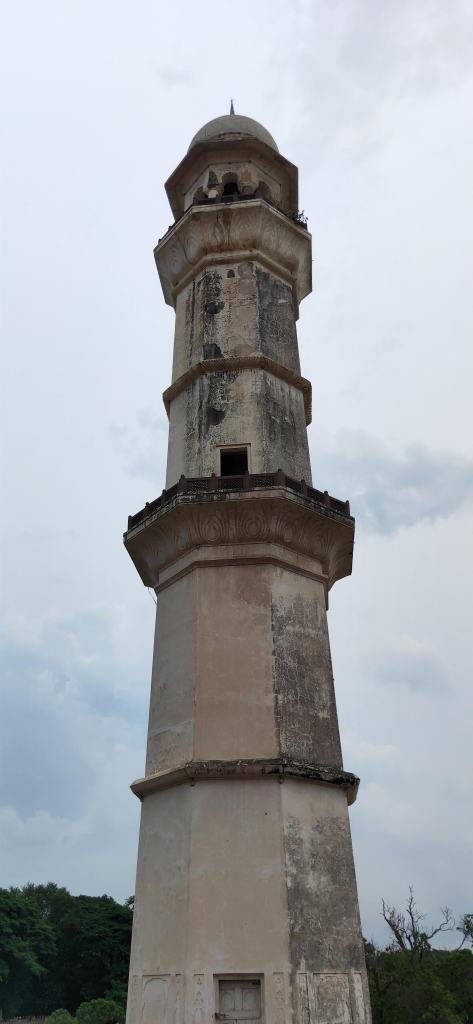
As per the information board of the Archeological Survey of India or ASI as they are commonly know, the tomb was constructed between 1651 and 1661 AD with an estimated cost of 660 hundred thousand Indian Rupees where in Aurangazeb sanctioned 7 hundred thousand Indian Rupees. Attaullah was the designer and Hanspat Rai was the engineer. The tomb was constructed by the use of marble brought from the mines of Jaipur in Rajasthan, It also says that around 300 carts each pulled by twelve oxen, were loaded with marble and brought to Aurangabad.
Monsieur de Thevenlot, a French traveler, described the monument 'King Aurangazeb built a lovely mosque for his first wife whom he dearly loved and who died in this town. The mosque was covered with domes and minarets,' While many of us marvel at such monuments now after so many years, we sometimes miss the fact such creativity is borne out of a person's enormous love for someone.
The garden which forms an integral part of this monument is in sync with geometric designs developed in Persia and Turkistan.
While the Taj Mahal's grace can be attributed to its location on the banks of the Yamuna River, the beauty of the maqbara in Aurangabad is enhanced by the verdant green hills that form a picturesque backdrop. The garden which forms an integral part of this monument is in sync with geometric designs developed in Persia and Turkistan. The garden now although disintegrated a bit now due to lack of maintenance or perhaps we arrived early before the start of the tourist season, if taken back into times bygone, must have been lush green lawns lined with trees. The grace of its youthful days is still vehement in its aura.

Another interesting fact is the streaks engineering brilliance, so noticeably prevalent in those days. This aspect finds its best usage in the application of water sources. The water required for the upkeep of the garden is supplied through underground water channels from the canals nearby and from the huge tank located in the premises of the monument. Unfortunately, over time the status of these water devices have degraded and the lime pipes are broken at different places.
Continuing my romance with doors, the wooden door at the entrance of Bibi-Ka-Maqbara is an interesting piece with a metal plate. This plate had geometric designs accompanied by star shaped motifs and tiny rosettes.

While it is an unnecessary exercise to compare two monuments, in this case the Taj Mahal and the Bibi -Ka-Maqbara, the history of the creators, the prevailing political and cultural conditions formulated the design and architecture of these monuments. Bibi-Ka-Maqbara as an architectural memoir has its own independent charm, grace and story. I have always made it a habit to enter a historical monument with empty thoughts and minimum expectations. This helps me walk out with a new learning and a satisfied human being. The idea is to unwrap yourself from fed certainty to a more enlightened human being by see, touch, and feel experience.
Bibi - Ka - Maqbara , unless you are having an extremely bad day, will never fail to impress you as a tourist. As a dilettante of historical monuments it will give you plenty of fodder to qualm about the lack of resources on this piece of history.





